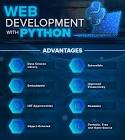The Critical Need for Software Engineering in Today’s Digital World
The Need for Software Engineering in Today’s World
In our increasingly digital world, the importance of software engineering cannot be overstated. Software engineering is the systematic application of engineering principles to the design, development, maintenance, testing, and evaluation of software. It plays a crucial role in the creation of reliable, efficient, and scalable software systems that power our modern society.
Why is Software Engineering Important?
Quality Assurance: Software engineering ensures that software products are developed with high quality standards. This includes reliability, security, performance efficiency, maintainability, and usability.
Efficiency and Scalability: Proper software engineering practices help in building software systems that are efficient and scalable to meet the growing demands of users and businesses.
Cost-Effectiveness: By following structured development processes and best practices, software engineering helps in reducing development costs and improving return on investment.
Risk Management: Software engineering methodologies help in identifying potential risks early in the development process and implementing strategies to mitigate them.
The Role of Software Engineers
Software engineers are responsible for designing, developing, testing, and maintaining software applications. They work closely with stakeholders to understand requirements and translate them into functional solutions. Software engineers also collaborate with other team members such as designers, project managers, and quality assurance professionals to deliver successful software projects.
The Future of Software Engineering
As technology continues to evolve at a rapid pace, the demand for skilled software engineers is expected to grow. From artificial intelligence and machine learning to cloud computing and cybersecurity, the field of software engineering offers diverse opportunities for innovation and advancement.
In conclusion, software engineering is essential for creating robust and reliable software systems that drive progress in various industries. By embracing best practices and staying current with emerging technologies, software engineers play a vital role in shaping the future of technology.
Understanding the Importance and Impact of Software Engineering: Key Questions Answered
- What is software engineering and why is it important?
- How does software engineering ensure the quality of software products?
- What role do software engineers play in the development process?
- Why is scalability crucial in software systems and how does software engineering address it?
- What are the cost-effectiveness benefits of following software engineering practices?
- How does software engineering help in managing risks during the development of software applications?
What is software engineering and why is it important?
Software engineering is a discipline that applies engineering principles to the design, development, testing, and maintenance of software systems. It involves systematic approaches to building software solutions that meet specific requirements and quality standards. The importance of software engineering lies in its ability to ensure the reliability, efficiency, and scalability of software applications. By following structured processes and best practices, software engineering helps in creating high-quality software products that are cost-effective, secure, and user-friendly. Ultimately, software engineering plays a critical role in driving innovation, improving business operations, and shaping the digital landscape of today’s world.
How does software engineering ensure the quality of software products?
Software engineering ensures the quality of software products through a systematic approach that encompasses various processes and methodologies. By following best practices such as requirements analysis, design principles, coding standards, testing procedures, and maintenance strategies, software engineers are able to develop high-quality software that meets user expectations. Quality assurance techniques like testing, code reviews, and continuous integration help identify and rectify defects early in the development lifecycle. Additionally, adherence to industry standards and compliance with regulations contribute to the overall quality of software products. Through rigorous planning, execution, and monitoring of software projects, software engineering plays a vital role in delivering reliable and efficient solutions to users.
What role do software engineers play in the development process?
Software engineers play a crucial role in the development process by designing, developing, testing, and maintaining software applications. They are responsible for translating stakeholder requirements into functional solutions and ensuring that the software meets high-quality standards. Software engineers collaborate with various team members, such as designers, project managers, and quality assurance professionals, to deliver successful software projects. Their expertise in coding, problem-solving, and understanding complex systems is essential for creating efficient and scalable software systems that drive innovation and meet the needs of users and businesses.
Why is scalability crucial in software systems and how does software engineering address it?
Scalability is crucial in software systems because it ensures that the system can handle increased workload or growth without compromising performance. Software engineering addresses scalability by employing design principles and architectural patterns that allow for easy expansion and adaptation of the system. Through techniques such as load balancing, horizontal scaling, and microservices architecture, software engineers can create systems that can efficiently scale up or down based on demand. By incorporating scalability considerations early in the development process, software engineers can build robust and flexible systems that can grow with the needs of the users and the business.
What are the cost-effectiveness benefits of following software engineering practices?
The cost-effectiveness benefits of following software engineering practices are significant and far-reaching. By adhering to structured development processes and best practices, organizations can reduce overall development costs while improving the return on investment for software projects. Software engineering helps in identifying and addressing issues early in the development cycle, which can prevent costly rework and delays later on. Additionally, by focusing on quality assurance, efficiency, and scalability, software engineering practices contribute to the creation of robust and sustainable software solutions that require fewer resources for maintenance and support over time. Ultimately, investing in software engineering practices leads to long-term cost savings and increased competitiveness in the market.
How does software engineering help in managing risks during the development of software applications?
Software engineering plays a crucial role in managing risks during the development of software applications by providing structured methodologies and best practices. By following established processes such as requirements analysis, design, implementation, testing, and maintenance, software engineers can identify potential risks early in the development lifecycle. Through risk assessment techniques and mitigation strategies, software engineering helps in addressing issues related to project scope, budget overruns, schedule delays, technical challenges, and quality assurance. By proactively managing risks and implementing preventive measures, software engineering ensures that software projects are delivered successfully with minimized disruptions and improved overall project outcomes.










